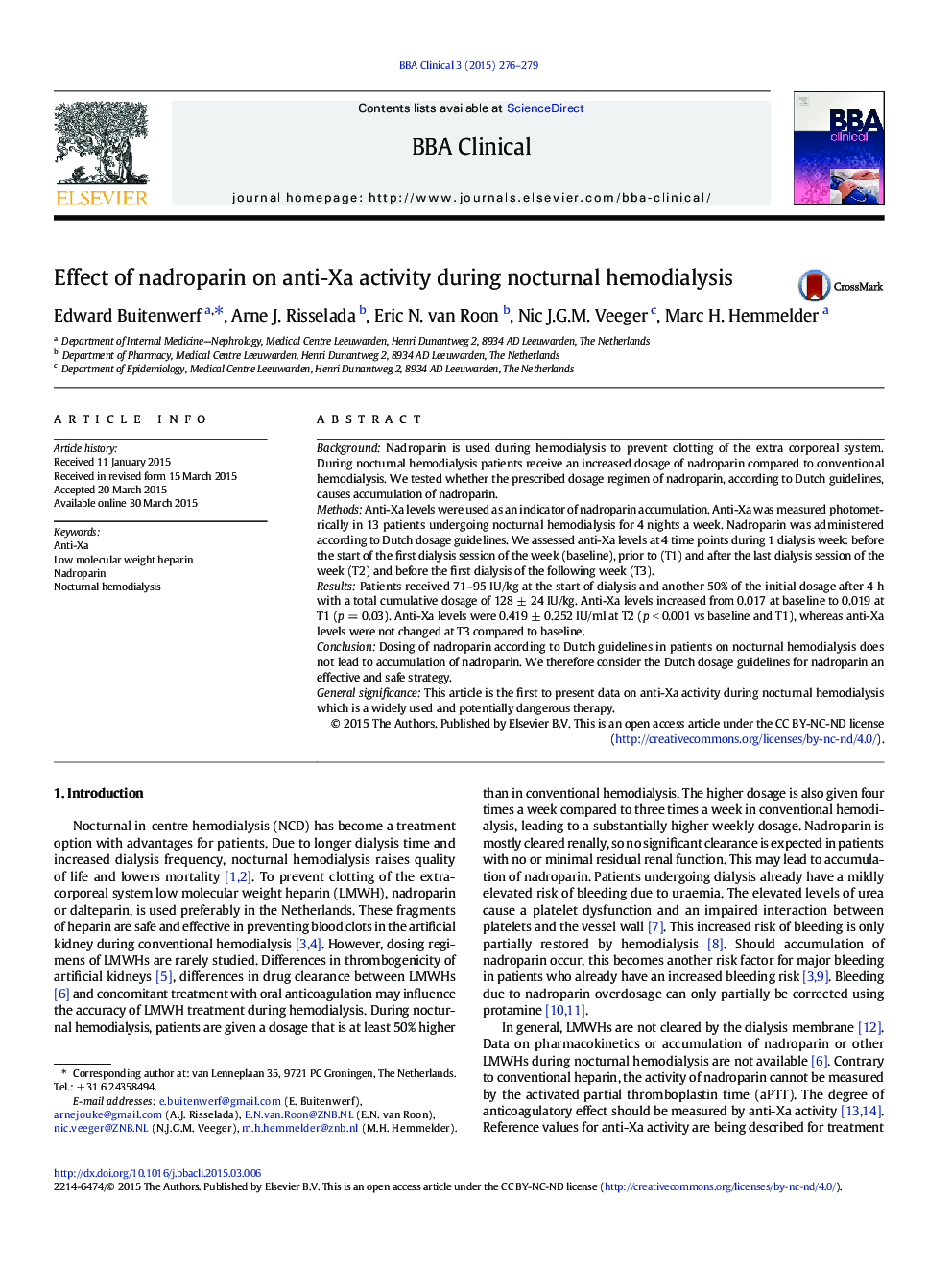| Article ID | Journal | Published Year | Pages | File Type |
|---|---|---|---|---|
| 2773144 | BBA Clinical | 2015 | 4 Pages |
•Higher dosages of nadroparin are administered during nocturnal hemodialysis.•Nadroparin can accumulate which leads to an increased bleeding risk.•We examined accumulation of nadroparin during nocturnal hemodialysis by measuring anti-Xa levels.•Accumulation of nadroparin does not occur during nocturnal hemodialysis.•Dutch guidelines for dosage of nadroparin in nocturnal hemodialysis are safe.
BackgroundNadroparin is used during hemodialysis to prevent clotting of the extra corporeal system. During nocturnal hemodialysis patients receive an increased dosage of nadroparin compared to conventional hemodialysis. We tested whether the prescribed dosage regimen of nadroparin, according to Dutch guidelines, causes accumulation of nadroparin.MethodsAnti-Xa levels were used as an indicator of nadroparin accumulation. Anti-Xa was measured photometrically in 13 patients undergoing nocturnal hemodialysis for 4 nights a week. Nadroparin was administered according to Dutch dosage guidelines. We assessed anti-Xa levels at 4 time points during 1 dialysis week: before the start of the first dialysis session of the week (baseline), prior to (T1) and after the last dialysis session of the week (T2) and before the first dialysis of the following week (T3).ResultsPatients received 71–95 IU/kg at the start of dialysis and another 50% of the initial dosage after 4 h with a total cumulative dosage of 128 ± 24 IU/kg. Anti-Xa levels increased from 0.017 at baseline to 0.019 at T1 (p = 0.03). Anti-Xa levels were 0.419 ± 0.252 IU/ml at T2 (p < 0.001 vs baseline and T1), whereas anti-Xa levels were not changed at T3 compared to baseline.ConclusionDosing of nadroparin according to Dutch guidelines in patients on nocturnal hemodialysis does not lead to accumulation of nadroparin. We therefore consider the Dutch dosage guidelines for nadroparin an effective and safe strategy.General significanceThis article is the first to present data on anti-Xa activity during nocturnal hemodialysis which is a widely used and potentially dangerous therapy.
